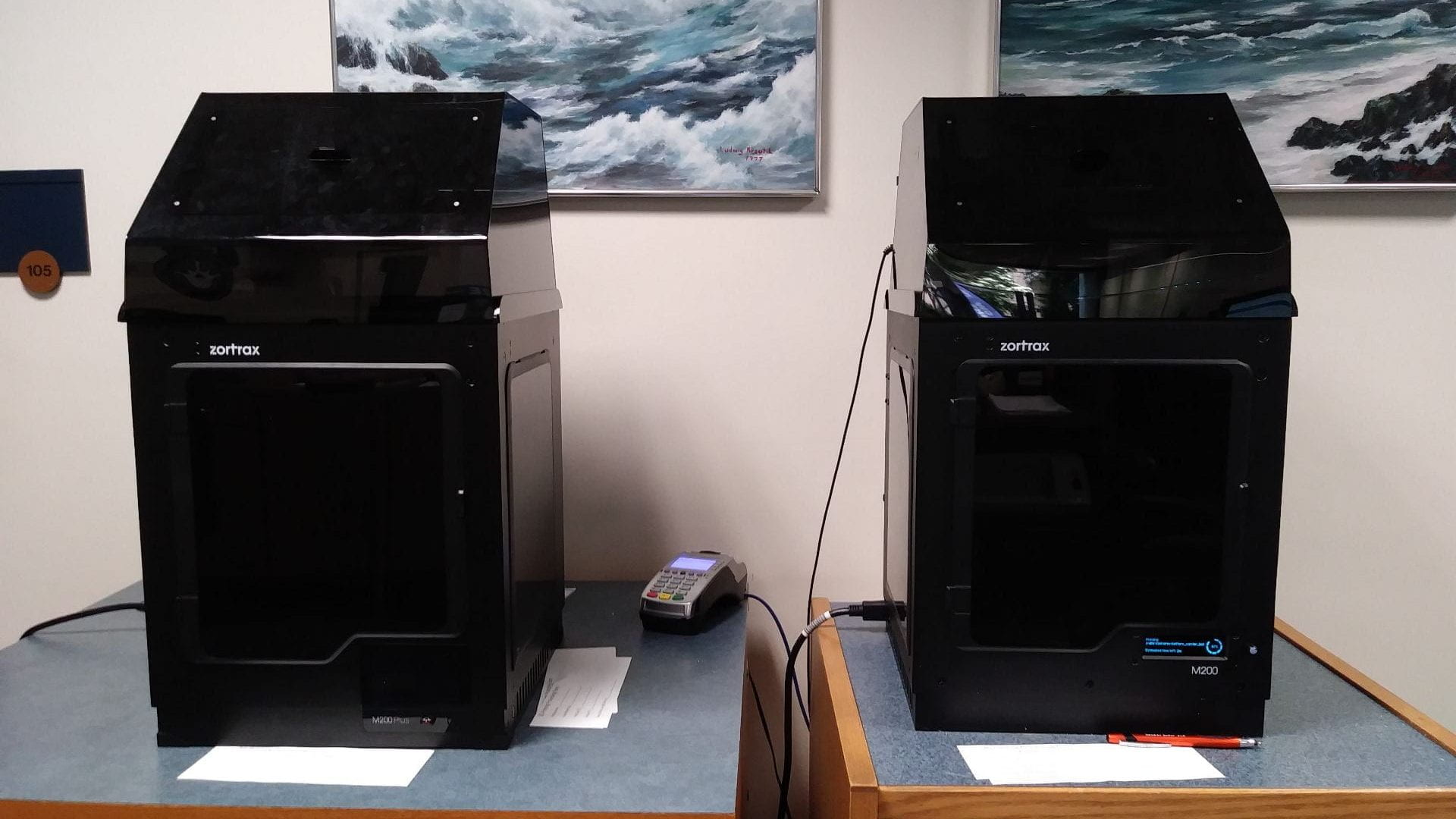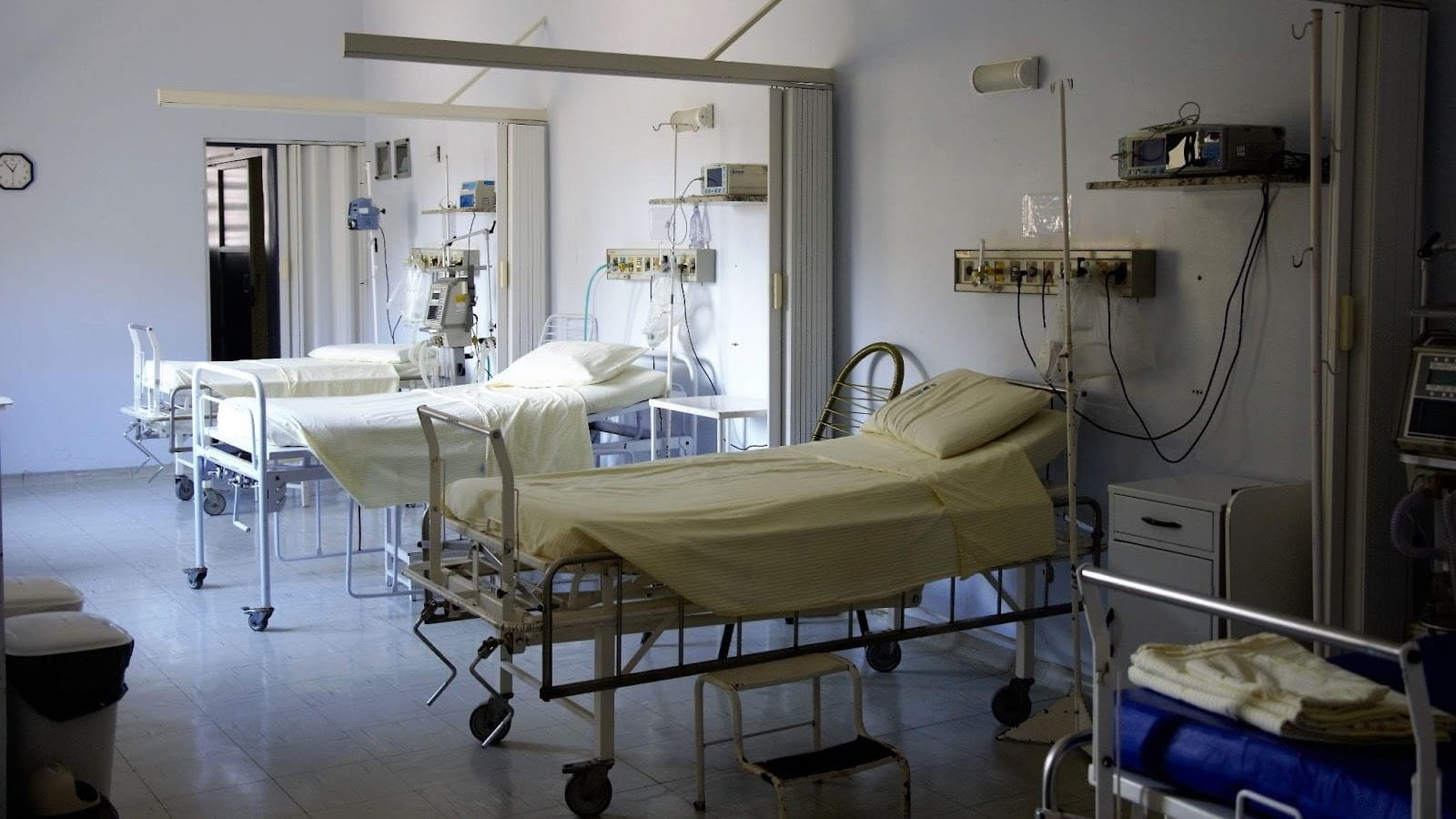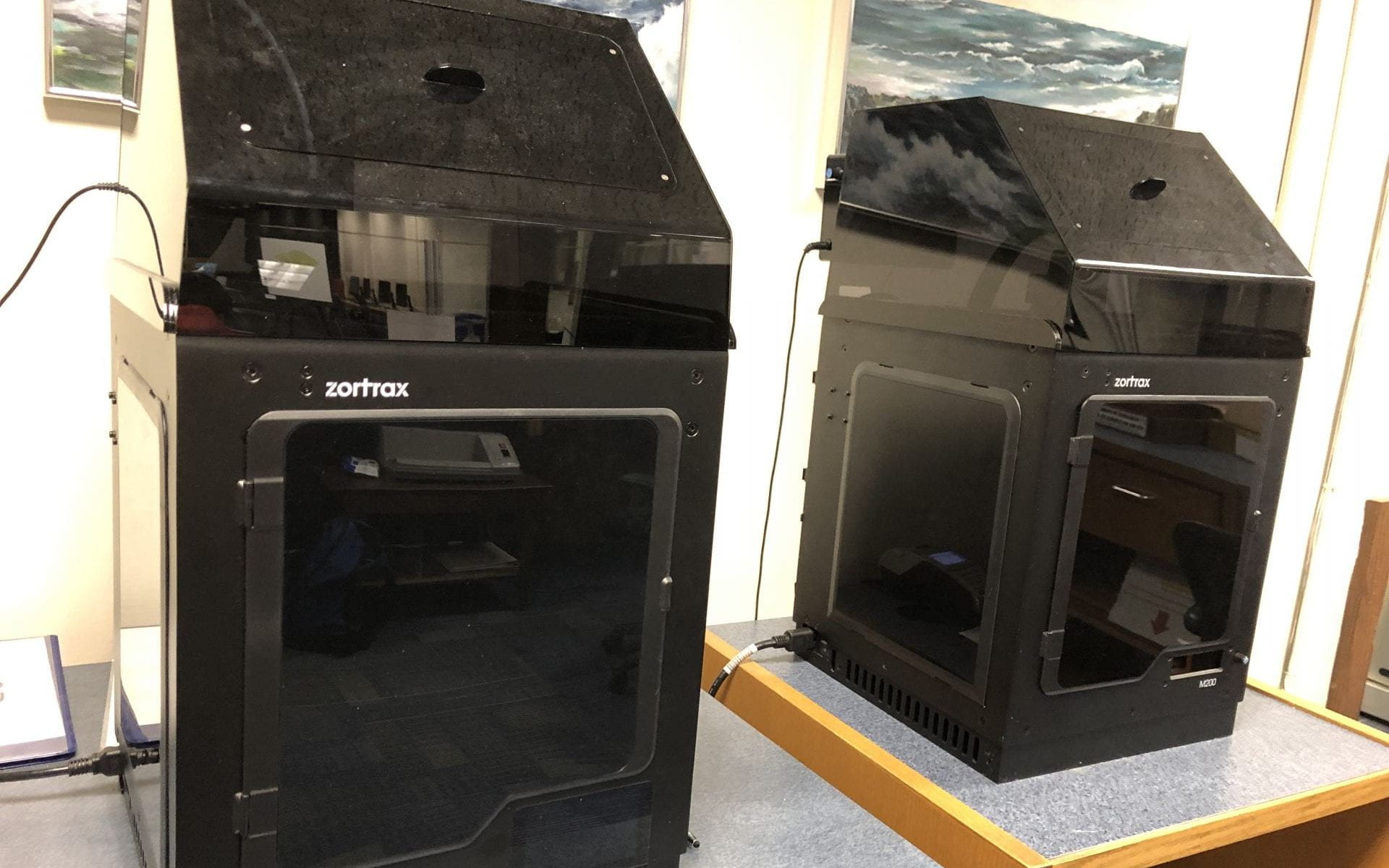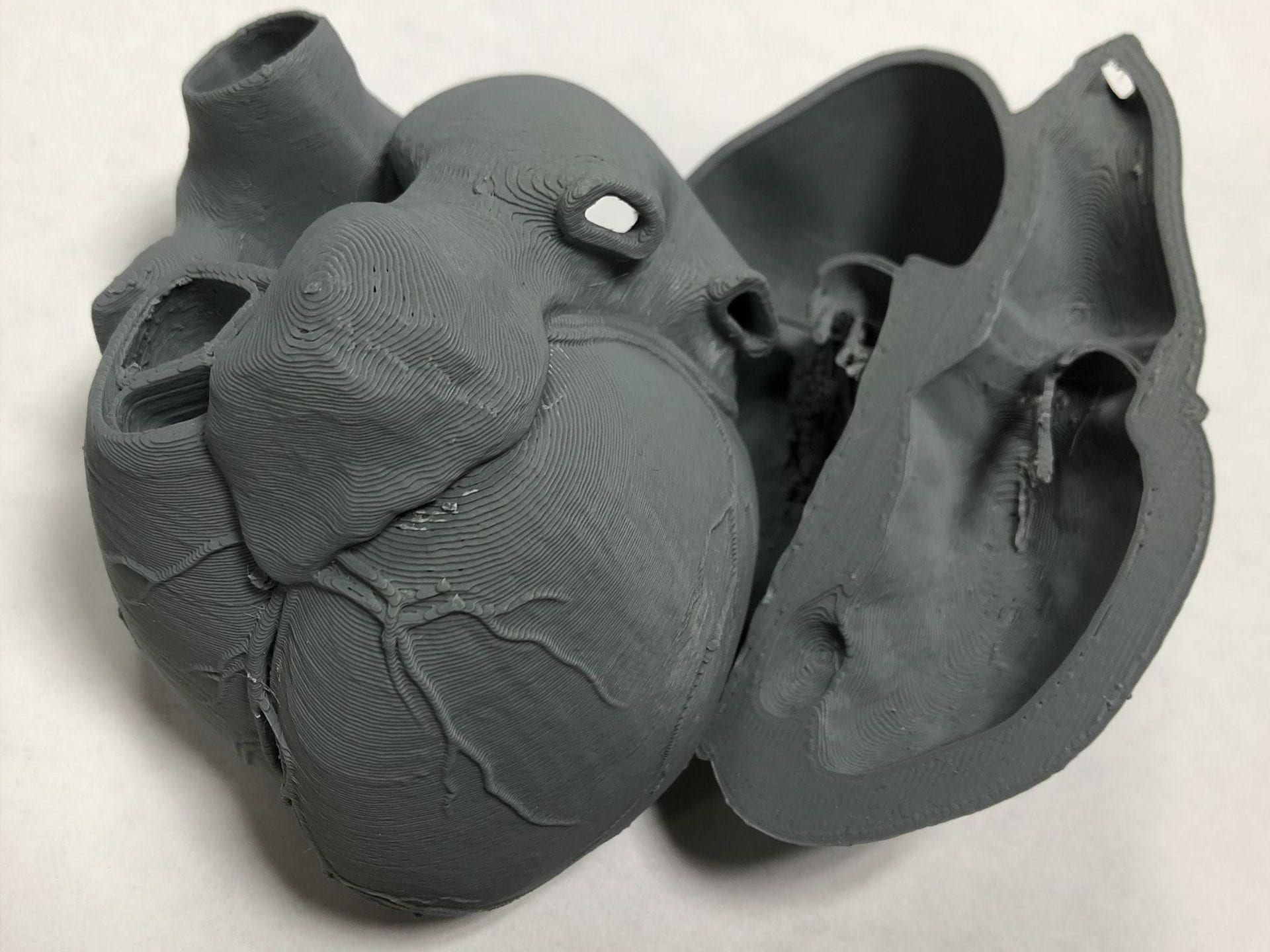
3D printing – what is it? It is a method of production, also known as additive manufacturing, in which software guides a machine to craft a 3D object, often with a high level of detail. This, however, is a very generalized definition. It is easy to assume that there is only one kind of 3D printing, but on the contrary: there are many different types of 3D printing, which can be referred to as “processes.” This post seeks to elaborate upon the different 3D printing processes, from the traditional Fused Deposition Modeling that you can find here at Himmelfarb Health Sciences Library, to the more unusual powder bed 3D printing, which is often used in the production of metal objects.
If you difficultly visualizing any of these types of 3D printing processes while reading this piece, check out Horne & Hausman’s 3D Printing for Dummies Chapter 2: Exploring the Types of 3D Printing. This post will describe these processes using more current terms, but this chapter has clear diagrams and illustrations, as well as some additional information about how various 3D printing processes function.
The most popular process of 3D printing is Fused Deposition Modeling, often referred to as FDM printing. This process produces 3D objects by heating up long strings of plastic material (aka: spools of filament), fusing it to the base platform of the printer, then continuing to build it up layer by layer using that same fusion process. Another way of looking at FDM printing is that it’s akin to a highly-nuanced hot glue gun (Horne & Hausman, 2018). There are also variants of FDM printers that utilize pellets instead of filament spools (Volpato et al., 2015), as well as those that use a cold semi-liquid mixture like what you might see with large-scale 3D printed houses that use concrete extrusion (Borg Costanzi et al., 2018).
FDM printing has some limitations. When the filament is in a moldable state during FDM printing, it extrudes through a nozzle, which is almost always moved along X and Y axes like what you might see on a crane game. Because of those movement restrictions, this process is weaker compared to its alternatives when it comes to items that have overhangs or details on an object’s underbelly. The machine is not so sensitive to be able to tell the difference between the 3D printers’ base platform, the previously-placed layers, and open air, so the printer needs the guiding software to give the digital object file (which you can think of as a map or a layout) structures known as “supports” which are designed to be removable. When those supports are removed, it is not uncommon to see score marks on the places where it touched, and in some cases, the area is so narrow that it’s impossible to remove those supports (Horne & Hausman, 2018).
Supports are less of a concern with Stereolithography Apparatus 3D Printing, also known as SLA printing. This 3D printing process produces 3D objects by aiming a laser up into a vat of liquid photopolymerizing resin. Photopolymerizing means that the liquid will transform into a solid when light of a certain wavelength touches it. Unlike FDM printers, which move the entire nozzle horizontally, SLA printers keep the laser fixed in one place, but change the angle. As the software instructs the laser to solidify certain portions of the vat of resin, the object is raised up and out of the vat by a component called the “elevator.” In the case of SLA printers, supports are not needed in order to hold up layers that have overhangs, but instead to keep the object attached to the elevator. SLA printers allow for more complex structures with holes, divots, and overhangs without using up as much filament and without causing scoring marks, and they often manage to print simple objects faster than FDM printers (Horne & Hausman, 2018).
SLA printing has its own downsides to keep in mind. For one, SLA printers tend to be more expensive than FDMs, and they require extra equipment, such as curing stations. Once the object is lifted up and out of the vat, it exists in a semi-cured state and is sticky. It needs to be treated with UV light to finish it. This makes not only cost, but space a concern, particularly since there is liquid resin involved, which requires special storage and disposal methods (Horne & Hausman, 2018).
Powder bed printing, also known as binder jet printing, likewise has some advantages at the cost of specialized set-up requirements. During this 3D printing process, a printer head moves horizontally along X and Y axes like with FDM printing, dropping a liquid binding material onto a powder that covers the printers’ base platform. When the binder comes in contact with the powder, a chemical reaction occurs that solidifies it. Since this process requires the use of fine particles which could be made of metal, plastic, sand, or even plaster, powder bed printers often require hoods and filters to prevent users from breathing in potentially harmful materials. An alternative method of powder bed printing uses a laser in the place of the binding liquid, which burns the powder to solidify it, which adds to the amount of safety equipment required (Horne & Hausman, 2018).
The finished product requires a step known as “depowdering” which can be done by hand with brushes and through automated vibration. Manual depowdering with brushes takes a significant amount of time, whereas automated vibration tools tend to be rather expensive. If you want to learn more about depowdering, this webpage by German depowdering manufacturer Solukon could be of help (Solukon, n.d.).
Powder bed printing is incredibly fast compared to FDM and SLA printing, and it has the added benefit of being able to produce metal objects swiftly. Additionally, this method does not require the use of supports, since the underlying layers of powder that were not activated by the binding chemical or laser can still support the weight of the rest of the object, despite the fact that the head of this kind of printer generally stays on X and Y axes like FDM printers (Horne & Hausman, 2018).
We would be remiss to not mention bioprinting, a process that technically falls under the umbrella of 3D printing which produces natural tissue, often for the sake of testing medications. The process of bioprinting starts by packaging certain types of cells taken from a biopsy into pellets the size of a micrometer or within a liquid that keeps the cells alive. Next, these packaged cells are combined with nutrients and a support material known as a matrix; this combination is known as a bioink. This bioink is then put into place layer by layer by the printer which is guided by software that interprets CT scans and MRIs. Up to this point, bioprinting fits the description of 3D printing, though the materials used are beyond the norm (Wei et al., 2020).
This is where bioprinting diverges, though. Rather than cooling down or solidifying and going off to the post-processing clean-up stage, the cells consume the nutrients and grow within the matrix. Pressure and chemical stimuli are added very carefully to nudge the cells to grow in the intended ways, and chemicals known as bioreactors are added as well to increase the speed of cell growth. There is no kind of 3D printing that is like this, simply because this part of the bioprinting process is less reliant on 3D printing methods and more on natural process of life: consumption, reproduction, and maturation (Wei et al., 2020).
Additional niche 3D printing processes also exist. Laminated Object Manufacturing (LOM) is a process that builds up laser-cut layers of paper, metal foil, or plastic film that has been coated with chemicals of choice. This process uses cheap, readily available materials and allows for additional customization, as the material color can change between layers (Horne & Hausman, 2018). Unfortunately, non-industrial LOM printer manufacturers are few and far between, as they are outpaced in popularity by FDM and SLA printers.
RoboCasting, a method of 3D printing similar to FDM printing which uses a paste made up of materials such as glass or ceramic, which either hardens on its own or needs to be baked. In their work, “3D Printing Bioinspired Ceramic Composites”, Feilden et al. explain how RoboCasting functions and how it can be used to mimic natural materials such as bone and shell (Feilden et al., 2017). This has some benefits for medical sciences through the development of implants such as biodegradable bone scaffolds that can aid during the healing process of bones, which you can learn more about in this study by Lei et al. (Lei et al., 2020).
Each of these 3D printing processes has strengths and weaknesses. Some may be faster, others may be more precise, and others still may be cheaper. This variability makes some more suitable for certain applications than others. FDM, for instance, because of its popularity, limited cost, and low barrier to entry, makes it a perfect choice for early-stage prototyping, whereas powder-bed printing may be more suited for an industrial environment. With 3D printing, the sky is truly the limit, particularly since new printers are being developed each year.
Want to try out 3D printing yourself? We are proud to announce that we have moved to a free-to-print policy and will no longer be charging cost-recovery fees for most print jobs. Some limitations apply, so make sure to consult our 3D Printing at Himmelfarb guide or full policy for the full details.
To learn more about our 3D printing service or to place a request, please visit our 3D Printing at Himmelfarb guide, or contact Brian McDonald (bmcdonald@gwu.edu) for more information.
References:
Borg Costanzi, C., Ahmed, Z. Y., Schipper, H. R., Bos, F., Knaack, U., & Wolfs, R. J. H. (2018) 3D printing concrete on temporary surfaces: The design and fabrication of a concrete shell structure, Automation in construction, 94, p. 395-404 https://doi.org/10.1016/j.autcon.2018.06.013
Feilden, E., Ferraro, C., Zhang, Q., García-Tuñón, E., D'Elia, E., Giuliani, F., Vandeperre, L., & Saiz, E. (2017). 3D printing bioinspired ceramic composites, Scientific Reports, 7(1), p. 1-9. https://doi.org/10.1038/s41598-017-14236-9
Horne, R. & Hausman, K. K. (2018). Exploring the types of 3D printing. 3D Printing for Dummies. https://ebookcentral.proquest.com/lib/gwu/detail.action?docID=4856326
Lei, L., Wei, Y., Wang, Z., Han, J., Sun, J., Chen, Y., Yang, X., Wu, Y., Chen, L., & Gou, Z. (2020). Core–shell bioactive ceramic robocasting: Tuning component distribution beneficial for highly efficient alveolar bone regeneration and repair, ACS biomaterials science & engineering, 6(4), p. 2376-2387. https://doi.org/10.1021/acsbiomaterials.0c00152
Solukon. (n.d.). Automating depowdering in 3D printing. Retrieved May 8. 2022 https://www.solukon.de/en/news/festo-and-solukon/
Volpato, N., Kretschek, D., Foggiatto, J. A., & Gomez da Silva Cruz, C. M. (2015) Experimental analysis of an extrusion system for additive manufacturing based on polymer pellets, International journal of advanced manufacturing technology, 81(9-12), p. 1519-1531. https://doi.org/10.1007/s00170-015-7300-2
Wei, S., Starly, B., Daly, A. C., Burdick, J. A., Groll, J., Skeldon, G., Shu, W., Sakai, Y., Shinohara, M., Nishikawa, M., Jang, J., Cho, D., Nie, M., Takeuchi, S., Ostrovidov, S., Khademhosseini, A., Kamm, R. D., Mironov, V., Moroni, L., Ozbolat, I. T. (2020). The bioprinting roadmap. Biofabrication, 12(2). https://doi.org/10.1088/1758-5090/ab5158




